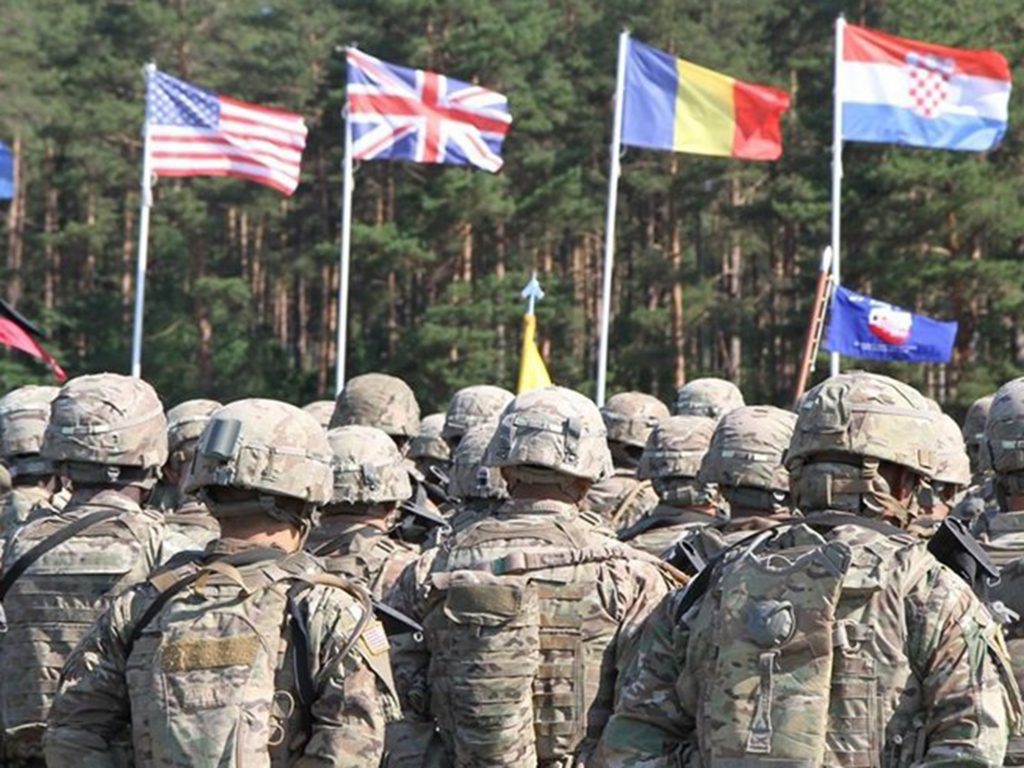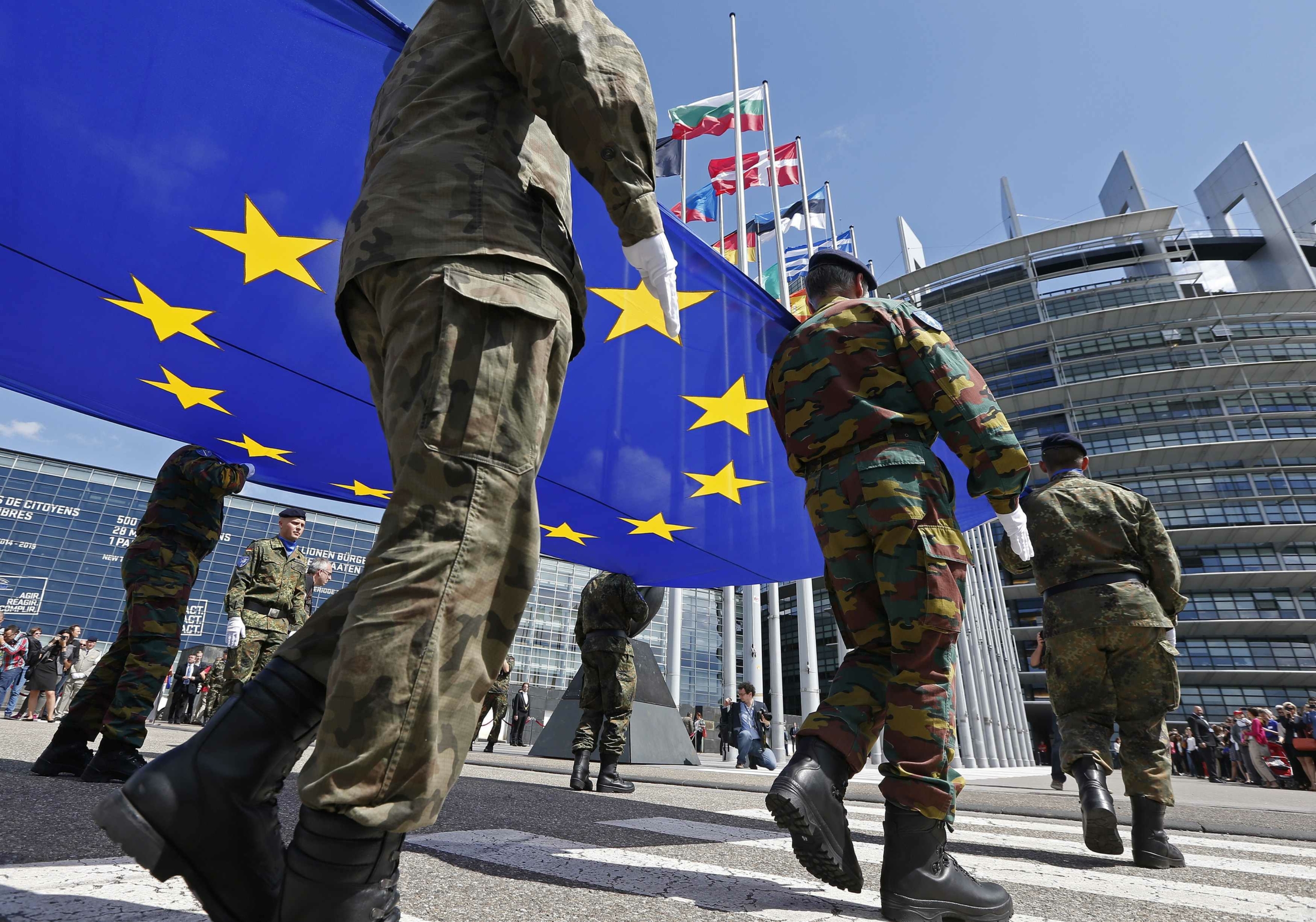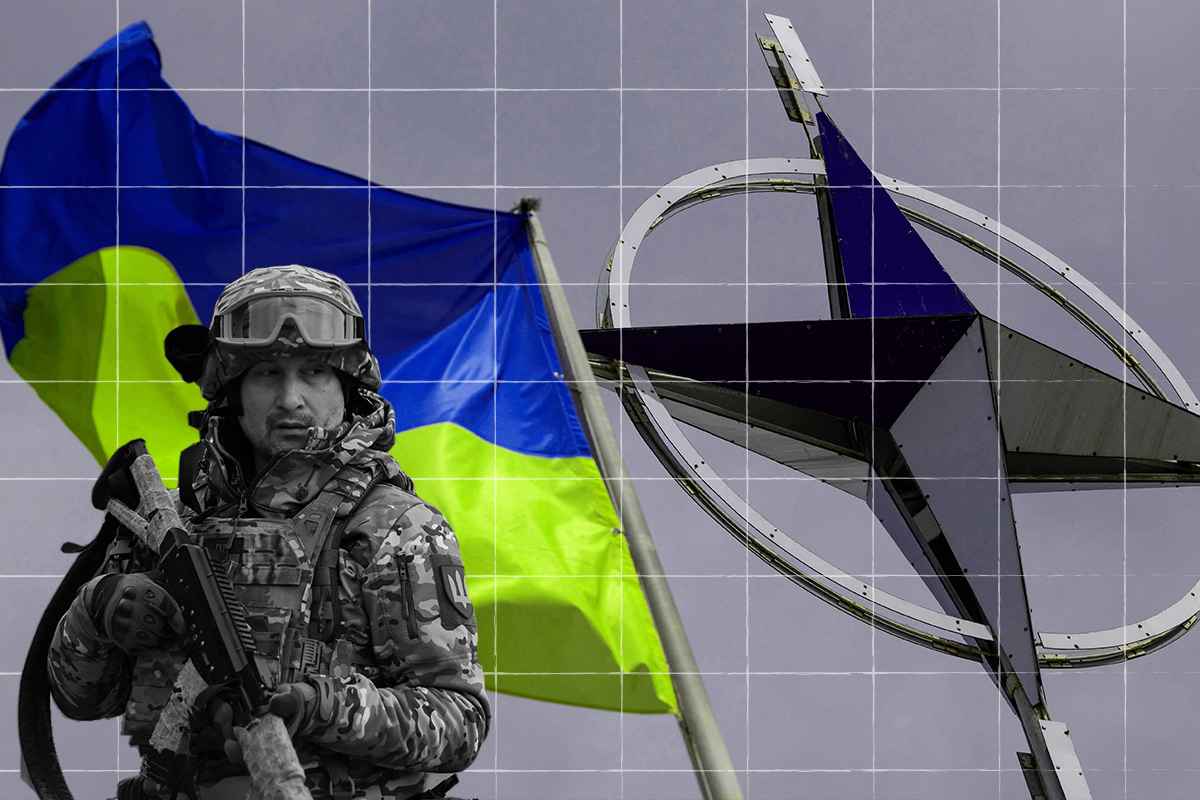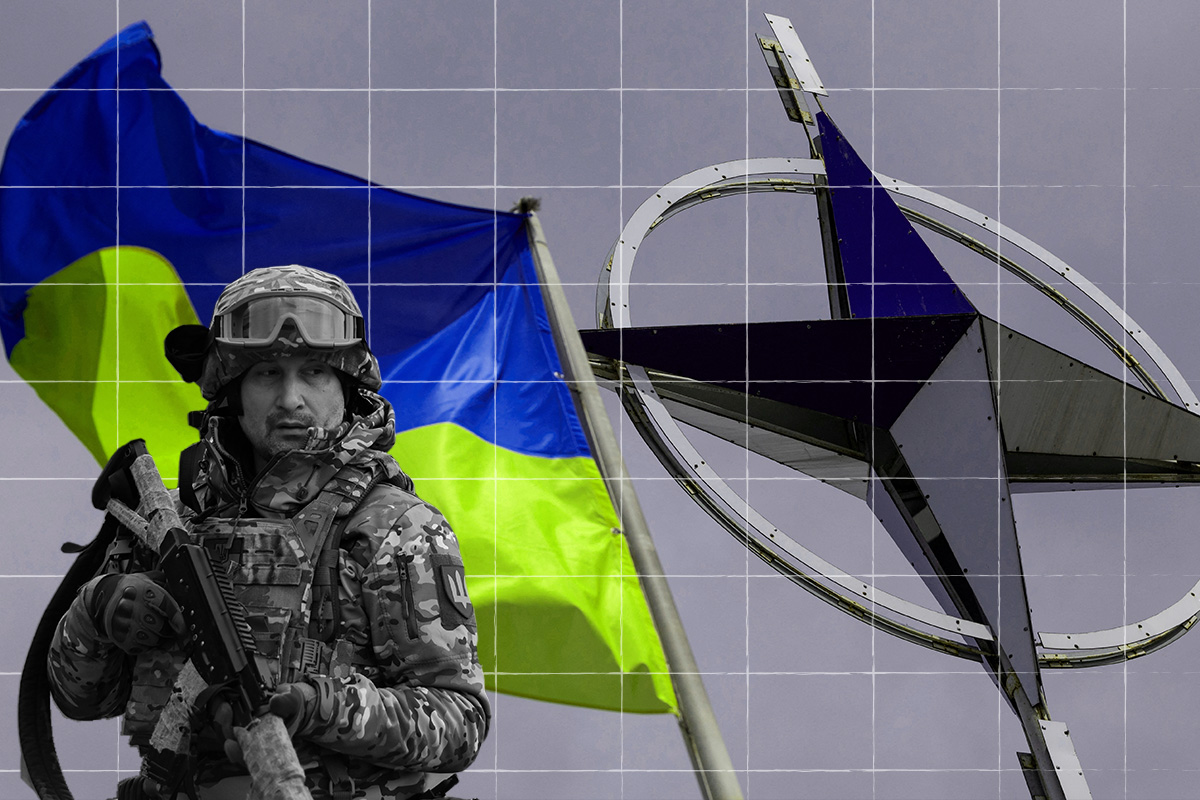The article “Enhancing Military Capabilities: Europe’s Commitment to Deterrence” examines the recent strategic shift in European defense policy aimed at bolstering military readiness across the continent. At the forefront is the $840 billion Rearm Europe Plan, which reflects Europe’s determination to take greater responsibility for its own security and support Ukraine in the face of ongoing geopolitical tensions. This initiative represents a historical pivot towards a more unified and robust defense posture, echoing past discussions about a European Army while focusing on the collective enhancement of military capabilities among EU member states.
In discussing this significant investment in defense, the article outlines key strategic priorities such as air defense, precision artillery, and modern drone capabilities. Furthermore, it indicates an increase in cooperation among European nations, highlighting the role of major defense producers in ramping up military production to meet new demands. Ultimately, the plan underscores Europe’s commitment to deterring potential conflicts through modernized military preparedness and enhanced collaborative efforts, reflecting a proactive stance in addressing emerging security challenges.

Overview of Europe’s Military Enhancement
Scope of Military Enhancement Initiatives
In recent years, Europe has embarked on a significant journey to enhance its military capabilities, acknowledging the shifting geostrategic landscape. This initiative encompasses a broad spectrum of military enhancement plans aimed at bolstering defense frameworks across the continent, with an emphasis on collective security and robust deterrence measures. The focus lies not only on modernizing existing military assets but also on creating a unified strategy that integrates capabilities across diverse European nations. As geopolitical tensions mount, particularly in the context of Russian provocations, this military enhancement initiative marks a decisive pivot towards a proactive defense posture.
Significance of the Rearm Europe Plan
Central to this military enhancement initiative is the Rearm Europe Plan, an ambitious funding program amounting to $840 billion. This plan symbolizes a paradigm shift in European defense thinking, underscoring the urgent need for EU member states to take control of their own security. By investing in defense across various dimensions—land, air, and sea—Europe aims to deter potential aggressors, reaffirm its global standing, and ensure member states can collaboratively respond to threats. The significance of this plan extends far beyond financial investment; it signals a commitment to a resilient and united Europe ready to tackle emerging security challenges.
Goals of Deterrence in a Contemporary Context
The modern understanding of deterrence has evolved, reflecting the complexities of contemporary conflict scenarios. Within this context, Europe’s military enhancement initiatives serve several key goals: to dissuade aggression through visible military readiness, to foster unity among member states against common threats, and to solidify alliances that enhance collective security. The goal is not war, but a strong posture that communicates Europe’s resolve to protect its peace and sovereignty. This comprehensive approach to deterrence underscores the recognition that maintaining security in the present requires preparedness for possible escalation in the future.
Rearm Europe Plan
Details of the $840 Billion Military Spending Initiative
The Rearm Europe Plan, with its staggering budget of $840 billion, heralds a new era of defense spending in Europe. This extensive financial commitment aims to address longstanding gaps in military readiness and capabilities throughout the continent. The allocation of these funds will prioritize enhancing existing military assets, upgrading infrastructure, and investing in new technologies. Moreover, the plan seeks to create a stable and flexible defense environment that can adapt to the rapidly changing geopolitical landscape, thereby ensuring that European nations are better equipped to handle any potential crisis.
Key Features of the Rearm Europe Plan
The Rearm Europe Plan is characterized by several pivotal features that reflect Europe’s strategic objectives. Firstly, it emphasizes increased collaboration among EU member states, promoting joint procurement initiatives that lead to standardized equipment and sharing of military resources. Secondly, it prioritizes advanced technological capabilities, including investments in cyber defense, missile defense systems, and modern warfare tools, such as drones and precision-guided munitions. Finally, the plan envisions the establishment of a more integrated European defense industry, fostering innovations that will not only enhance military capabilities but also stimulate economic growth within member states.
Comparisons to Historical Military Spending Efforts
When contextualizing the Rearm Europe Plan, it is essential to draw comparisons to historical military spending efforts within Europe. The current initiative evokes memories of wartime mobilizations, where nations pooled together resources to fortify defenses and deter adversaries. The scale of investment today exceeds previous historical commitments made during the Cold War, marking a watershed moment in European defense collaboration. Unlike the fragmented and nation-centric approaches of the past, the Rearm Europe Plan exemplifies a strategic shift towards greater integration and prioritization of collective security across the continent.
EU Leadership and Security Responsibility
Statements from EU Leaders on Security
EU leadership has been vocal regarding the imperative of taking on greater security responsibilities. High-profile statements from leaders emphasize a unified commitment to overcoming security challenges collectively, recognizing the necessity of reinforcing defense capabilities in the face of external threats. This unified rhetoric not only signals solidarity among member nations but also conveys a clear message that Europe is ready to shoulder the burden of its own security, reducing reliance on external partners. The statements reflect a shift towards a more assertive European identity on the global stage.
Historical Shifts in Defense Responsibility
The historical trajectory of defense responsibility within Europe reveals a significant evolution in security paradigms. Post-World War II, the establishment of NATO dominated European defense policies, with most member nations relying on the United States for security guarantees. However, as geopolitical circumstances have shifted, particularly following the end of the Cold War and the resurgence of authoritarian regimes, the need for European self-reliance has grown ever more pressing. This historical shift underscores a broader recognition that enhanced security and defense capabilities are foundational to national sovereignty and regional stability.
Implications for EU Unity and Defense Strategy
The emphasis on collective security through the Rearm Europe Plan carries profound implications for EU unity and defense strategy. As member states collaborate more closely on military initiatives, the likelihood of reinforcing diplomatic ties increases, contributing to a cohesive European identity. Moreover, this collective approach to security serves to dilute potential rifts among nations, fostering trust and collaboration. However, it remains crucial for EU leadership to navigate varying national interests to maintain unity, ensuring that member states perceive a shared ownership of defense policy.
Support for Ukraine
Current Security Dynamics in Ukraine
Ukraine’s ongoing conflict has reshaped Europe’s security dynamics, making it a focal point of strategic attention. The resilience displayed by Ukrainian forces has prompted European nations to reassess their vulnerabilities and defense strategies. As hostilities continue, the need for a robust response is underscored by both humanitarian and geopolitical considerations. Supporting Ukraine is not merely a matter of regional stability; it is viewed as integral to the larger narrative of defending democratic principles against authoritarian aggression.
Europe’s Role as an Ally
Europe’s commitment to supporting Ukraine extends beyond rhetoric to include tangible military assistance, economic aid, and humanitarian support. The Rearm Europe Plan reflects an acknowledgment of Ukraine’s significance as an ally in the struggle against external threats and as a partner in safeguarding European values. By enhancing military capabilities and offering unwavering support, European nations aim to reinforce Ukraine’s resilience while simultaneously asserting their own strategic interests. This partnership symbolizes a collective commitment to defending shared democratic ideals.
Long-Term Implications for European Security
The implications of the Ukraine conflict for European security are profound and multifaceted. Sustained support for Ukraine not only bolsters its defense but also has ripple effects across Europe, reshaping perceptions of security and collective defense. In the long term, the conflict promotes a reevaluation of security strategies, urging member states to prioritize readiness, resilience, and cooperation at unprecedented levels. As Europe navigates these challenges, the ramifications for regional security architecture will likely be significant, establishing new norms of engagement mid-military alliances.

Historical Context of European Defense
Evolution of European Military Cooperation Since WWII
The evolution of European military cooperation since World War II has been pivotal in shaping the continent’s security landscape. Initially characterized by the devastating consequences of war, European nations sought a path toward reconciliation through collective defense agreements. NATO’s formation marked a definitive turning point, establishing an alliance rooted in mutual defense obligations. Over the decades, this cooperation expanded beyond military alignment to encompass broader political and economic partnerships, reflecting a growing interdependence among European states.
Past Proposals for a European Army
Throughout history, various proposals for a unified European Army have emerged, reflecting the aspiration for collaborative military engagement. Notably, the attempts during the 1950s to create a European Defense Community ended in failure, underscoring the complexities of national pride and defense autonomy. These proposals highlight ongoing debates regarding the balance between national sovereignty and the need for effective collective defense mechanisms. Despite past failures, the notion of a European military structure continues to resonate within contemporary defense discussions, as evidenced by current initiatives.
Lessons Learned from Historical Defense Initiatives
Historical defense initiatives offer critical lessons for contemporary European military strategies. The constraints and challenges faced in past endeavors underscore the importance of addressing national sensitivities and ensuring equitable participation among member states. The failures of earlier proposals for a unified military structure reveal that effective collaboration requires not only common goals but also a willingness to accommodate diverse political and military traditions. As Europe seeks to enhance its military posture, these lessons will be essential in shaping an effective and cohesive defense framework.
Modern Defense Cooperation Among EU States
Advancements in Collective Defense Strategies
Modern defense cooperation among EU states has progressed significantly, driven by shared security interests and collective threats. Initiatives focused on joint military training, interoperability, and collaborative missions have created a foundation for a more integrated defense landscape. The establishment of frameworks for coordinated defense planning, such as Permanent Structured Cooperation (PESCO), promotes synergies across member states and serves as a platform for advancing collective capabilities. These advancements complement national defense efforts, enhancing the strategic position of Europe as a whole.
Joint Procurement Initiatives
Joint procurement initiatives represent a critical aspect of modern defense cooperation, facilitating shared acquisitions that enhance military readiness while optimizing resource allocation. These initiatives enable EU member states to collectively purchase advanced systems and platforms, reducing duplication of effort and lowering costs through economies of scale. The desire for standardized equipment leads to improved interoperability among forces, ensuring that when European nations operate together, their systems function seamlessly—an essential component of a cohesive defense strategy.
Standardization of Weapon Systems Across Member States
The push for standardization of weapon systems across EU member states has emerged as a key priority, allowing for enhanced operational effectiveness and simplifying logistics. By adopting common standards, European armed forces can more easily integrate and coordinate their military efforts. This not only minimizes the challenges associated with inter-operability but also fosters a unified defense capability that reinforces deterrence measures. Standardization enhances collective resilience, signaling to potential adversaries that Europe possesses both a unified front and a diverse array of military assets.

Strategic Military Priorities
Focus on Air Defense Systems
One of the primary strategic military priorities emerging from the Rearm Europe Plan is the enhancement of air defense systems. The increasing use of advanced aircraft and missile technology by potential adversaries necessitates a robust air defense capability, positioning it as a critical component of European security. Investments in integrated air defense systems aim to protect both national and collective resources, ensuring that European skies remain secure against aerial threats. This focus reflects heightened recognition of air superiority as a key determinant of military success in contemporary conflict.
Development of Drone Technology
The rapid advancement of drone technology signifies a transformative shift in modern warfare, influencing Europe’s strategic priorities. The integration of unmanned aerial systems is viewed as essential for enhancing surveillance, reconnaissance, and combat capabilities. By investing in the development and deployment of drones, European nations seek to leverage cutting-edge technology to achieve strategic advantages in conflict scenarios. The emphasis on innovation in this sector underscores a commitment to ensuring that Europe maintains competitive military capabilities in an evolving security environment.
Enhancing Ground Combat Capabilities and Artillery
Alongside advancements in aerial capabilities, there is a concerted effort to enhance ground combat capabilities and artillery systems within the context of the Rearm Europe Plan. Recognizing that land forces play a vital role in any military engagement, Europe aims to modernize its ground units through improved training, equipment upgrades, and enhanced logistics. This commitment to ground combat effectiveness reinforces the notion that military readiness must encompass all dimensions of warfare, ensuring a formidable and responsive military posture.
Military Production Capacity in Europe
Role of Major Defense Contractors
Major defense contractors play an essential role in Europe’s military production capacity, serving as the backbone of the continent’s defense industry. Companies such as BAE Systems, Rheinmetall, and Thales are at the forefront of innovation, engineering, and production of advanced military technologies. Their expertise is crucial in meeting the growing demands associated with the Rearm Europe Plan, particularly as nations grapple with scaling up production to align with new military strategies. The collaboration between government and industry is paramount in fortifying Europe’s defense capabilities.
Increased Production Targets and Challenges
The recent escalation in military spending has prompted European nations to set ambitious production targets, reflecting heightened urgency in addressing defense needs. However, achieving these targets is fraught with challenges, including supply chain disruptions and labor shortages exacerbated by global economic factors. Meeting increased demand for advanced military hardware requires not only investment but also efficient coordination among production facilities. As European states work to expand their military production capacity, navigating these challenges becomes a priority in ensuring that defense commitments can be fulfilled.
Impact on Employment and Economic Growth in Defense Sectors
The commitment to enhancing military production capacity generates significant implications for employment and economic growth within defense sectors across Europe. As governments invest in bolstering their military capabilities, the demand for skilled labor in areas such as engineering, manufacturing, and research and development is likely to increase. This infusion of resources can stimulate local economies, create jobs, and promote innovation in related industries. Additionally, a robust defense sector serves as a strategic asset, providing nations with the ability to safeguard their interests while contributing to economic stability.

Nuclear Defense Considerations
The Role of British and French Nuclear Capabilities
The nuclear capabilities of Britain and France are pivotal components of Europe’s broader defense strategy. These two nations possess advanced nuclear arsenals that serve as deterrents against existential threats. The integration of their nuclear forces into European security frameworks provides a crucial safeguard, offering a layer of protection for member states. As Europe contemplates its nuclear posture amidst evolving global security challenges, maintaining effective oversight and integration of these capabilities proves essential for deterring potential aggression.
Potential for EU-Wide Nuclear Sharing Agreements
In light of contemporary security dynamics, discussions surrounding the potential for EU-wide nuclear sharing agreements have gained traction. Such agreements could enhance collective deterrence within Europe, allowing for more coordinated responses to security threats. The prospect of nuclear sharing emphasizes the importance of strategic cohesion among member states, fostering collaboration on nuclear policies and capabilities. Effective management of nuclear assets within a collective framework could bolster Europe’s defense posture and reinforce its commitment to maintaining security.
Strategic Implications of Nuclear Defense Enhancement
The enhancement of nuclear defense capabilities carries significant strategic implications for Europe. Strengthening nuclear deterrence can serve to both dissuade aggressors and reinforce alliances among member states. However, it also presents the challenge of balancing defense needs with non-proliferation commitments and the broader implications of nuclear warfare. As Europe seeks to enhance its military capabilities, careful consideration of the role of nuclear assets—and the broader strategic landscape—will play a crucial part in shaping future defense policies.
Conclusion
Summary of Europe’s Commitment to Enhanced Military Capabilities
Europe’s commitment to enhancing military capabilities through the Rearm Europe Plan underscores a transformative moment in the continent’s defense strategy. By prioritizing investment in advanced technologies, fostering collaboration, and reinforcing collective security measures, European nations are signaling a determined posture in the face of emerging challenges. This commitment reflects a shared understanding of the importance of military readiness and the necessity of responding proactively to potential threats.
Reflection on Deterrence as a Proactive Strategy
Deterrence, as a proactive strategy, stands at the forefront of Europe’s military enhancement initiatives. By fortifying military capabilities, Europe seeks to project strength and resolve, effectively communicating its readiness to counter any aggression. This shift towards a robust military posture emphasizes the need for preparedness and unity among member states, fostering a collective identity grounded in mutual defense interests.
Key Takeaways for the Future of European Defense
As Europe navigates the complexities of contemporary security challenges, key takeaways emerge for the future of its defense policy. The importance of fostering cooperation, standardization, and collective responsibility cannot be overstated, particularly in an interconnected security environment. By embracing these principles, Europe aims to cultivate a more resilient and coordinated approach to defense, ultimately enhancing its ability to safeguard peace and stability for generations to come. The path ahead demands vigilance, unity, and foresight to ensure that Europe remains steadfast in its commitment to securing its future.

